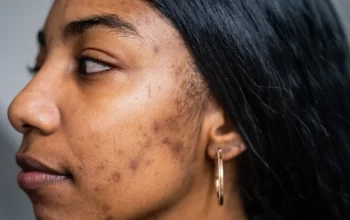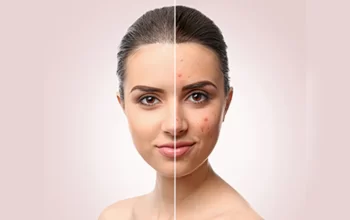Acne Treatments – Available Options to Get Rid of Acne
Acne can cause physical scarring and, more often than not, can impact your self-image. Fortunately, there are several highly effective ways to treat acne which lower both your chances of developing scarring and the amount of acne you currently have. Acne is present almost anywhere on the human body. In fact, it’s estimated that acne affects up to 90 percent of the population.
The causes of acne are multi-faceted. Acne is most often caused by hormonal activity in teenage years (including an increase in estrogen during puberty), excess sebum production, or the body’s reaction to a particular antibiotic. Regardless of the cause, acne is most common on the face. Severe cases of acne may also affect the neck, back, and chest. While severe cases of acne can be disfiguring, milder cases of acne can be treated easily and relatively inexpensively.
Mild to moderate cases of acne usually clear within a few weeks. If you’re having problems with blemishes that don’t heal after a week or two, you should consult a dermatologist or skin specialist. If whiteheads and blackheads are present, you will probably want to try natural remedies first. These remedies include washing your skin at least twice daily using an anti-bacterial soap or cream; applying a soft, oil-free moisturizer to your affected areas twice daily; and using an ice compress to remove whiteheads and blackheads from your skin. If these methods don’t effectively remove your blemishes, you may want to consult your dermatologist who will most likely prescribe topical retinoid creams or oral antibiotics to help treat your acne.
While most people believe that acne is caused by excessive oil secretion by your sebaceous glands, the real cause is actually bacterial infection of your skin. Excessive oil production by the sebaceous glands of your skin contributes to the formation of pimples. When your skin produces too much oil, it also traps dirt and other debris beneath its surface, some of which can get trapped in the follicles of your skin, leading to bacterial growth and eventual pimple formation. You may also want to avoid squeezing or picking your pimples, since this can spread the bacteria to nearby tissues, worsening your acne.
Acne scars can sometimes appear on severe cases of acne. Acne scars are actually caused by damage to the dermis layer of the skin. This causes the top layer of your skin to scar, while the bottom layer remains untouched, protecting it from further damage. Scarring can occur both during and after the acne treatment procedure. If you notice scarring after your treatment, you may have to undergo a procedure to remove them. Scarring due to acne can also be avoided by using sunscreen when you go out into the sun, avoiding excessive touching of your skin, and exfoliating your skin at least twice a week.
The main cause of pimples is that excess dead skin cells build up in the hair follicles of the skin. In the process of shedding these dead skin cells, the bacteria that was living within the clogged pores gets trapped. These bacteria then release toxins, some of which can irritate your skin and cause acne. This is why a good way to prevent pimples is to keep the pore open by regularly cleansing your skin with a mild facial cleanser or soap. This will remove the bacteria that could potentially cause the inflammation. Exfoliation will also help rid your skin of excess dirt and debris, which can promote the growth of bacteria.









